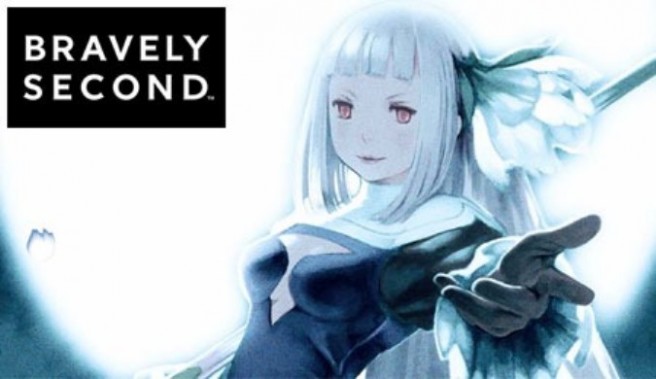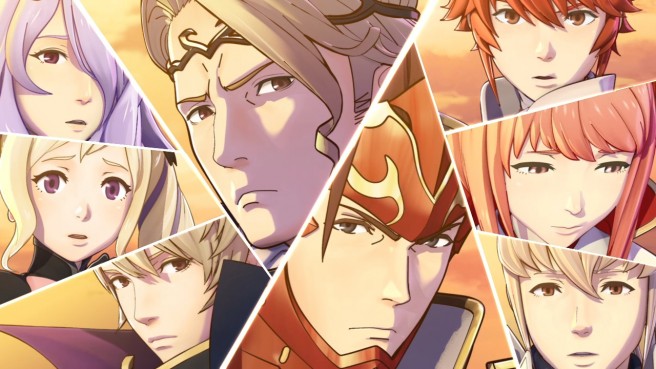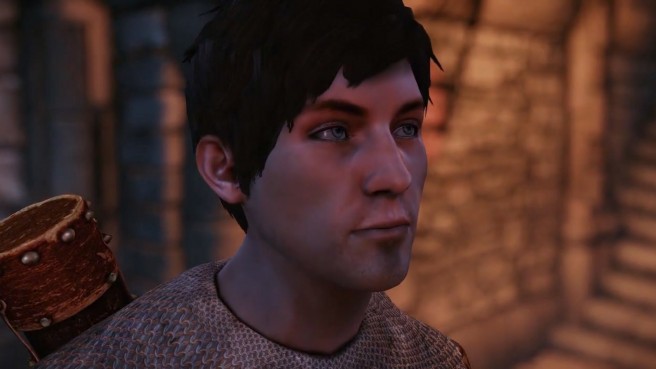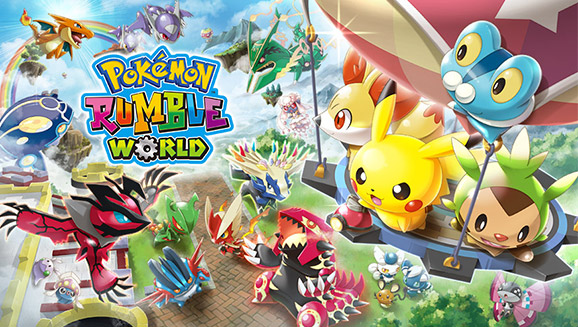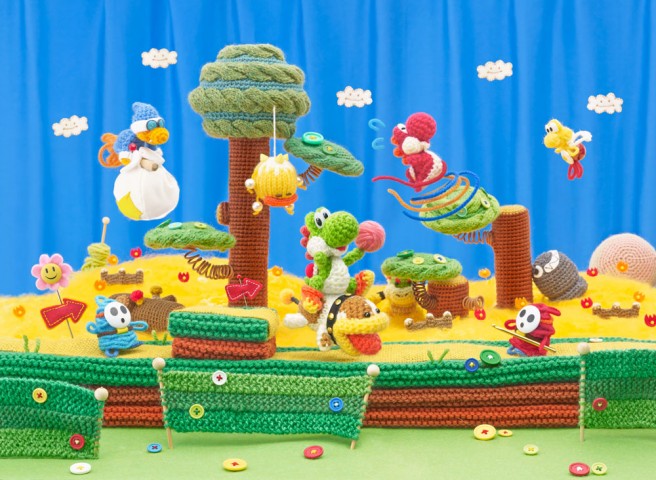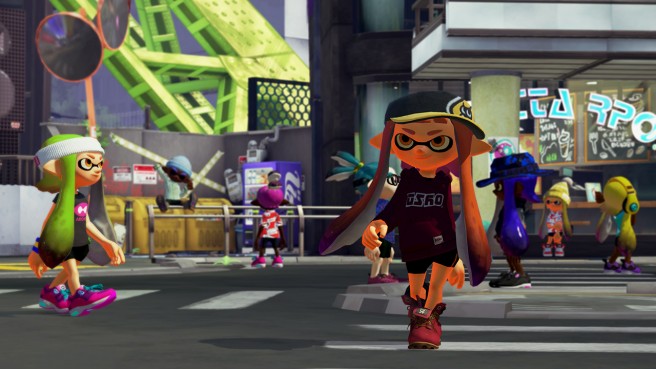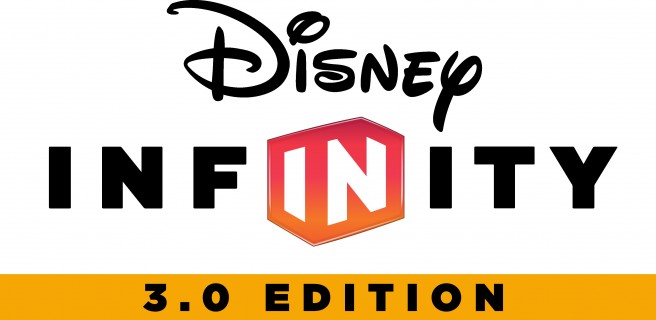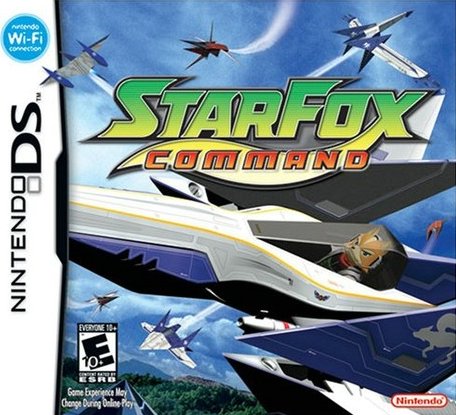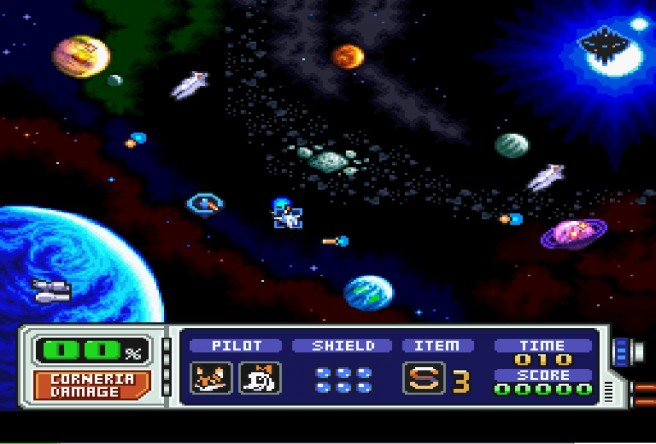Bravely team considering whether to make a sequel or new title, thinking about Bravely Second for the west
Posted on 10 years ago by Brian(@NE_Brian) in 3DS, News | 4 Comments
The next “Bravely” game could head in one of two directions. Speaking with Japanese website Gamer, producer Tomoya Asano stated that the team is considering two options. The next Bravely game could be a another sequel, but it’s also possible that we’ll see a completely new title instead.
Asano and assistant producer Shinji Takahashi said:
“Hmm… yes, we’re currently thinking about whether a sequel would be more appropriate or if a completely new title would be more appropriate. This is currently a hot topic among [the development team].” – Asano
“We’re thinking about all kinds of things, like what kind of things are requested, and getting feedback from fans.” – Takahashi
Asano shared some other interesting information as well. When asked if Bravely Second will see something like Bravely Default: For the Sequel (re-release with fixes and additions), he noted that there are no plans. The team is only thinking about the western version of the game.
Also, there are currently no plans for additional scenarios through DLC. The only updates for Bravely Second will come in the form of standard patches.
More Fire Emblem If details from Famitsu’s full interview with the dev team
Posted on 10 years ago by Brian(@NE_Brian) in 3DS, News | 5 Comments
In a Famitsu issue from earlier this month, the magazine spoke with a few developers working on Fire Emblem If. But it turns out that the magazine didn’t contain the full discussion. It wasn’t until today that the full interview was finally posted on Famitsu’s website.
Serenes Forest has once again taken on the task of translating the full Famitsu discussion. A summary of what was shared can be found below.
– Interview starts off with the concept behind the game
– Again, it was built around the main character (Avatar) and how his/her choice impacts the story, splitting it into 2 distinct “what if” stories
– Movie scenes are generally from a first-person perspective since the Avatar is the main character
– Phoenix Mode is designed for newcomers; not existing Fire Emblem fans
– Although it sounds like you cannot lose on this mode, there are times when you still have to play somewhat carefully
– Ex: there may be complicated victory conditions, such as reaching a destination within a certain number of turns in the Nohr campaign; failing these conditions means Game Over
– When development began, one of the major challenges was to find ways to help newcomers enjoy the game without feeling too stressful
– One thing that came to mind was the timing of when to use valuable weapons (eg. saving them for a future mission)
– It was perceived that this form of intense micro-management was too much for newcomers to properly enjoy
– Since some players may consider it wasteful to use a particular weapon, they may end up not using it at all; at which point it’s as if the weapon doesn’t exist
– By removing the durability of weapons and giving them more interesting properties, it allows for more enjoyable play, without detracting from the fun of picking weapons
– Weapon weight isn’t in, but there are “strong weapons that are harder to double attack with”, which functions a bit like it
– Javelins and similar ranged weapons can no longer double attack
– The staff unanimously agreed on bringing back Yusuke Kozaki for character designs
– Since the new game has more characters than even Awakening, there was some concern about who to call if Yusuke Kozaki didn’t accept the offer, so the team were very glad when he agreed to reprise the role again
– This game takes place in a “completely new world”
– Some familiar elements that those who played Awakening will appreciate
– Hoshido is based on ancient Japanese culture, while Nohr is built on the series’s traditional Western fantasy setting
– Nohr is western-themed, but also carries a dark atmosphere
– Nohr’s castle even stands in the middle of a giant hole in the ground
– Hoshido is a pacifist kingdom with exceptional peace and order
– In contrast, Nohr is subject to terrible weather conditions, leading to poor crop yields and a lack of law and order
– In order to expand Nohr’s influence, King Garon orders his children to invade Hoshido
– Thus the royal siblings fight for Nohr, although they each harbour their own hidden thoughts
– Meanwhile the Hoshidan royals take up arms to repel the Nohrian invasion
– As this happens, the hero–the Avatar–is stuck in between and forced to make a difficult choice
– Classes available largely depend on the campaign chosen
– In Nohr, you will typically see more characters in familiar classes, like Cavaliers
– In Hoshido, most of the characters are in Japanese-themed classes, like Samurais
– The campaign also determines the weapons you can obtain
– In Nohr, you will commonly obtain “swords”
– In Hoshido you are more likely to find “katanas”, which have slightly different properties
– Although Pegasus Knights have been in the series so far, they technically do not exist in this game.
– If instead features Hoshido’s very similar “Pegasus Warrior” class
– Pegasus Warriors can be male or female
More: Famitsu, Fire Emblem If, interview, top
Shadow of the Eternals still in the works, team has “big plans for the future”
Posted on 10 years ago by Brian(@NE_Brian) in News, Wii U eShop | 24 Comments
Shadow of the Eternals is a new passion project from Eternal Darkness creator Denis Dyack. Dyack, along with the rest of his team, hoped to achieve funding via Kickstarter. Two campaigns launched in 2013, but both unfortunately failed to reach their funding goals.
We last heard about Shadow of the Eternals last October. The project is now in development at Quantum Entanglement Entertainment Inc., which was founded by Dyack. Other than that, things have been pretty quiet
However, Dyack once again commented on Shadow of the Eternals while speaking with Niche Gamer. When asked about its funding status, he stated:
Well, we can’t talk about that right now. But there will be announcements in the future. The bottom line is we’re really excited on where we’re going, things are very quiet, and probably will continue to be quiet but they’re going well. Please stay tuned, and we’ll update everyone as soon as we can. I wish I could say more, but you know the drill with the industry, right?
Additionally, when asked if a potential re-reveal is planned, and whether we’ll see the game soon, Dyack said:
Well, it all depends on what your definition of soon is. [laughs]
Rather than tease, I would just say that we believe in the project and we’re doing everything we can to see this project – and other projects – some of which are really great as well, get out there. We’ve got some big plans for the future, and we’re being very aggressive on some things, and we’re really looking forward to see how things roll out.
More: Denis Dyack, interview, Shadow of the Eternals, top
Ambrella on why Pokemon Rumble World is free-to-play, considered automatic movement, more
Posted on 10 years ago by Brian(@NE_Brian) in 3DS eShop, News | 3 Comments
In Famitsu’s most recent issue, the magazine caught up with Ambrella director Norio Matsumura and president Muneaki Ozawa. The two sides chatted all about the free-to-play 3DS game Pokemon Rumble World.
One of the most notable questions Famitsu asks is why the team decided to try out the F2P model. Matsumura noted that it actually happened thanks to a suggestion from Pokemon president Tsunekazu Ishihara.
Matsumura said:
Mr. Ishihara (the president of the Pokemon Company) suggested: “Let’s try out F2P.” Personally I think that refreshing controls and the nature of continuously returning to the game are concepts which suit free games very well, so I thought there was a chance of success. However, many members of the staff are against F2P games…
Matsumura continued on his comments by talking about how development didn’t progress without some resistance:
Yoshi’s Woolly World devs on the graphics, made real items with wool for testing
Posted on 10 years ago by Brian(@NE_Brian) in News, Wii U | 13 Comments
This month’s issue of EDGE has a short interview with the developers behind Yoshi’s Woolly World. The magazine spoke with Nintendo producer Takashi Tezuka as well as executive producer Etsunobu Ebisu from Good-Feel. Given the unique style featured in Yoshi’s Woolly World, the discussion focused on the game’s visuals.
Tezuka first spoke about Yoshi’s Woolly World’s art style in general:
We’ve always felt that Yoshi deserves to have a handcrafted feel to the graphics, and we’ve strived to bring this into games like Yoshi’s Island and Yoshi’s Story. With those previous titles, it was just that – an aesthetic – and didn’t really have much influence on the gameplay itself.
Tezuka also specifically explained the decision to use wool in the title, and how the graphics impact the gameplay:
More: Good Feel, interview, top, Yoshi's Woolly World
Splatoon’s UK marketing campaign on the same level as Mario Kart 8
Posted on 10 years ago by Brian(@NE_Brian) in News, Wii U | 10 Comments
Nintendo has a rather substantial marketing campaign lined for Splatoon in the UK. Marketing manager Chandra Nair, speaking with MCV, mentioned that it will be on the same level as Mario Kart 8.
According to Nair:
We have a substantial campaign planned for Splatoon. To give you an idea of the scale, we’re matching Mario Kart 8 – that’s the potential we think Splatoon has. We have the utmost confidence in the potential of Splatoon. It gives retailers a fantastic art style that stands out in-store or on-screen and it also offers various up-sell opportunities with the accompanying Amiibo. It’s a really interesting game for us because it allows us to expand out to a group of people who may never have considered Wii U before.
Thus far, Nintendo has already been involved with digital billboards, cinema ads during Tomorrowland and Mad Max, a sponsorship of Cartoon Network, and a digital campaign that started in April. That’s on top of a Splatoon-themed skatepark in Corby which opened last month.
More: Chandra Nair, interview, Splatoon, UK
Video: “Harnessing The Disney Empire For Disney Infinity 3.0”
Posted on 10 years ago by Brian(@NE_Brian) in Videos, Wii U | 0 comments
Game Informer published an extensive interview with John Vignocchi from Disney Interactive. In addition to talk about the company’s gaming approach within Disney, he also touches on how things are managed to fuel the Infinity brand. Check out the interview below.
Star Fox Command’s initial prototype was “very much like the original Star Fox”
Posted on 10 years ago by Brian(@NE_Brian) in DS, News | 1 Comment
Star Fox Command could have ended up as a very different game. Initially, the plan was to make it “very much like the original Star Fox,” according to developer Dylan Cuthbert.
So what happened? Cuthbert recently stated that Shigeru Miyamoto “specifically told us to take the game in the direction of Star Fox 2”. He wanted the game “to be more experimental” and to use the “DS’ tow screens in as interesting a way as possible.”
Cuthbert’s comments in full:
The initial prototype we made was very much like the original Star Fox, but Miyamoto specifically told us to take the game in the direction of Star Fox 2 and I was happy to explore those more strategic themes. Miyamoto told us to be more experimental, using the DS’ two screens in as interesting a way as possible. Takaya Imamura was stationed in our office permanently during development and created the story lines and other character-based parts to the game.
More: Dylan Cuthbert, interview, Star Fox Command
Completed version of Star Fox 2 exists
Posted on 10 years ago by Brian(@NE_Brian) in General Nintendo, News | 6 Comments
According to Q-Games boss Dylan Cuthbert, who worked on the original SNES title, Star Fox Command, and Star Fox 64 for 3DS, a finished version of Star Fox 2 exists.
In an interview with Nintendo Life, Cuthbert mentioned that he was able to play the game during the development of Star Fox Command.
Even after the decision was made we went ahead and completed it, taking it to be fully QA’d through Mario Club. During development [of Star Fox Command] we received a copy of the mastered Star Fox 2 ROM to play, and it was quite a blast.
Cuthbert also noted that ROM images found on the Internet are unfinished prototypes, as they are missing elements that make it complete. Unfortunately, it sounds like we probably won’t ever see what the finished version looks like.
The legal problems regarding the now-defunct Argonaut Software are probably a nightmare. Never say never though! The fully complete Japanese ROM at least does exist.
More: Dylan Cuthbert, interview, Star Fox 2
Rodea: The Sky Soldier – interview with the game’s creator and director
Posted on 10 years ago by Brian(@NE_Brian) in 3DS, Videos, Wii U | 2 Comments
NIS America uploaded a new video interview for Rodea: The Sky Soldier with creator Yuji Naka and director Zin Hasegawa. Watch it below.
